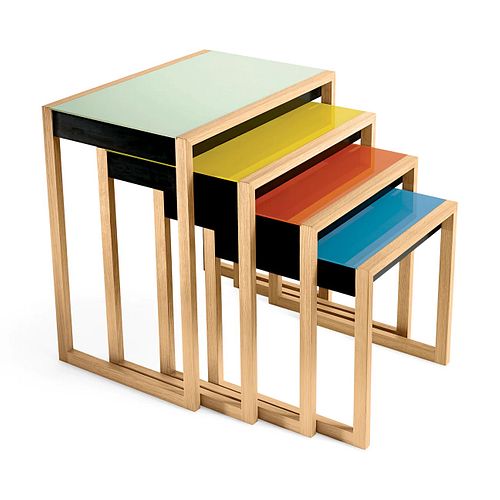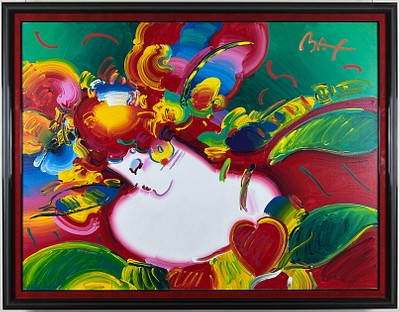Josef Albers Nesting Tables
Lot 666
Categories
Estimate:
$3,000 - $4,000
Absentee vs Live bid
Two ways to bid:
- Leave a max absentee bid and the platform will bid on your behalf up to your maximum bid during the live auction.
- Bid live during the auction and your bids will be submitted real-time to the auctioneer.
Bid Increments
| Price | Bid Increment |
|---|---|
| $0 | $5 |
| $100 | $10 |
| $200 | $20 |
| $1,000 | $50 |
| $5,000 | $100 |
| $10,000 | $200 |
About Auction
By Scottsdale Art Exchange
Jul 29, 2023
Set Reminder
2023-07-29 12:00:00
2023-07-29 12:00:00
America/New_York
Bidsquare
Bidsquare : Our Annual Midsummers Day Auction
https://www.bidsquare.com/auctions/scottsdale-art-exchange/our-annual-midsummers-day-auction-13196
This auction will feature 900 amazing items. The Auction will include 300 items for our fine art gallery and over 600 items from our consignment partners. Scottsdale Art Exchange sue@firerockfineart.com
This auction will feature 900 amazing items. The Auction will include 300 items for our fine art gallery and over 600 items from our consignment partners. Scottsdale Art Exchange sue@firerockfineart.com
- Lot Description
Josef Albers was a German-born American artist and educator known for his significant contributions to the fields of abstract art, color theory, and art education. He is best known for his series of artworks titled ""Homage to the Square."" Here are some key points about Josef Albers: 1. Early Life and Education: Josef Albers was born on March 19, 1888, in Bottrop, Germany. He studied art at the Royal Art School in Berlin and later attended the Weimar Bauhaus, a renowned art school where he became a student and then a faculty member. Albers was influenced by the Bauhaus movement's emphasis on the integration of art, craft, and technology. 2. Teaching at the Bauhaus: Albers taught at the Bauhaus from 1923 to 1933, initially as a stained glass and glass workshop instructor and later as the head of the preliminary course. His teaching approach focused on the fundamentals of art, including color theory, composition, and material exploration. He believed in the transformative power of art and emphasized experimentation and critical thinking in his pedagogy. 3. ""Homage to the Square"": Albers is most famous for his series of paintings titled ""Homage to the Square,"" which he began in 1950 and continued until his death in 1976. These paintings consist of nested squares of different colors, exploring the interactions and optical effects of color relationships. Through this series, Albers investigated the perception of color and the subjective nature of visual experience. 4. Color Theory and Interaction: Albers dedicated much of his career to studying color theory and the ways in which colors interact with one another. His book ""Interaction of Color,"" published in 1963, is considered a seminal work on the subject. In it, Albers explores the relativity of color perception and the psychological and emotional effects of different color combinations. 5. Influence on Art and Design: Albers' teachings and artistic ideas have had a profound impact on subsequent generations of artists and designers. His emphasis on color relationships, geometric abstraction, and the integration of art and education has influenced fields such as graphic design, architecture, and industrial design. His approach to art-making and teaching continues to be studied and practiced worldwide. 6. Later Career and Legacy: After leaving Germany in 1933 due to the rise of the Nazi regime, Albers and his wife Anni Albers immigrated to the United States. He taught at Black Mountain College in North Carolina and later joined the faculty of Yale University, where he became the chair of the Department of Design. Albers' legacy is preserved through his artworks, writings, and the influence he had on his students and the broader art community. Josef Albers' contributions to abstract art, color theory, and art education have made him a highly regarded figure in the art world. His exploration of color relationships and his innovative use of geometric forms continue to inspire artists and designers, while his dedication to art education has had a lasting impact on pedagogical approaches in the field.
Measures 14 x 14.
Mounted to archival quality paper. "
Range in measurments from 24.75 x 23.75 x 15.75 to 15.75 x 16.5 x 5.75.
Made of glass and oak.
Produced in Germany.Good condition. No rips, tears, creases.Condition
- Payment & Auction Policies
-
Available payment options
-
-
- Buyer's Premium



 EUR
EUR CAD
CAD AUD
AUD GBP
GBP MXN
MXN HKD
HKD CNY
CNY MYR
MYR SEK
SEK SGD
SGD CHF
CHF THB
THB





















